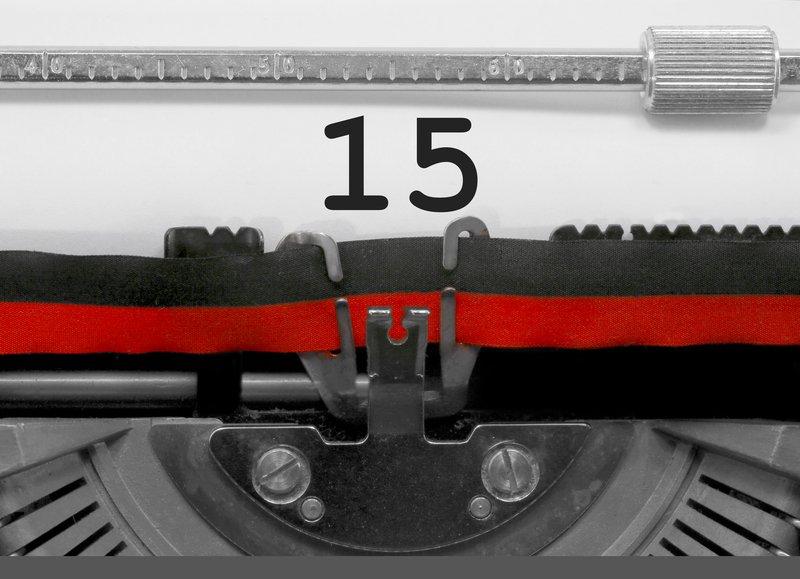Once you decide to become self-employed, you can start trading right away. This guide explains how to register your new business for self-assessment and other taxes.
Registering as self employed – make sure this is how you want to trade
You can run your new business via your own limited company, or simply as a sole trader.
We look at the differences between the two structures in these guides:
- 15 advantages of running your business as a limited company instead of being self employed and
- 7 advantages a sole trader (self employed) business has over a limited company
You should carefully consider the pros and cons of each option, and discuss with your accountant before taking the leap.
Choose a name for your new business
If you decide to go self employed (i.e. set up as a sole trader), you need to choose a name for your new enterprise.
Some people trade under their own name, or say they are; ‘Your Name trading as Business Name‘. For example, if you were David Adams, you could opt for ‘David Adams trading as David Adams Plumbers’.
Don’t forget to check whether your preferred business name is already being used.
There is no register of business names used by self-employed people, so you should do an online search to see whether someone is already running a business with your preferred name.
If someone has beaten you to it, and you want to avoid any potential legal claims against you, it’s best to think again and devise an alternative name for your new business.
Register with HMRC to tell them you are becoming self employed
HMRC suggests registering with them as soon as you become self-employed.
However, you do not have to register as a sole trader until the 5th of October in your business’s second tax year.
A tax year runs from 6th April to 5th April the following year.
So, for example, if you started a new business working as a sole trader in March 2023, you have until 5th October 2023 to register.
Free Tide Business Bank Account - £50 Cashback!

Open a free business current account to qualify + enjoy 12 months free transactions. Read our Tide review.
However, if you become self employed in May 2023, you have until 5th October 2024 to register as a sole trader with HMRC.
Depending on your personal circumstances, you will need to register with HMRC by one of these three different methods;
1. Going self employed for the first time and HAVE NOT previously completed a tax return
If you have not previously submitted a self assessment tax return, you should register your new business online with HMRC here.
By doing this, you will register for Self-Assessment tax and National Insurance simultaneously.
2. Going self employed for the first time and HAVE previously completed a tax return
If you are becoming a sole trader for the first time and have previously completed a Self Assessment Tax Return in an individual capacity; or example, if you have received an income which isn’t taxed at source such as rent or investment income – you must register as self-employed and for Class 2 National Insurance by completing form CWF1.
Doing this will enable you to keep your existing Self Assessment account.
3. You have been registered as a sole trader previously
If you have used the self-assessment process in the past but didn’t complete a return the previous tax year, you need to reactivate your account.
You must sign in with your Government Gateway details and know your UTR number.
If you can’t use the online form, you must complete form CWF1 and return it to HMRC.
You are responsible for paying tax and National Insurance
Once you register as self-employed with HMRC, you will be responsible for calculating and paying your own tax and national insurance liabilities.
You must complete and submit a self-assessment tax return to HMRC every year.
Most sole traders hire an accountant to deal with their tax affairs. A good accountant can safely negotiate this complex area and advise you on the most tax-efficient way to operate.
A smart move is to put tax money aside in a separate bank account from day one.
If you do this, you will never find yourself scrabbling around and looking behind the sofa for the money to meet a tax payment.
Your accountant can guide you on how much tax you can expect to pay. Better still, try our sole trader tax calculator.
As a sole trader, you are also responsible for paying your own National Insurance Contributions (NICs).
Sole traders pay Class 4 NI contributions, which are currently:
- 6% on annual profits between £12,570 and;
- £50,270 and 2% on profits above this (2024/5 tax year).
You can also pay voluntary Class 2 NICs – currently (2024/5) £3.45 a week above £12,570 per year.
You can find the current NIC rates and allowances here.
The rules aren’t straightforward, so it’s wise to consult your accountant for advice specific to your financial situation.
Should you register for VAT?
If your business has, or is likely to have, an annual turnover of more than the current VAT registration threshold, you need to register for VAT. The registration threshold for the year from April 2024 is £90,000.
Keep a close eye on your new business’s performance. Once your annual turnover passes the threshold, you only have 30 days to register.
You don’t have to wait for your turnover to reach the threshold to register for VAT – you can register at any time.
In some cases, it might be beneficial to register for VAT as soon as you start up. Being VAT registered means you can reclaim the VAT you pay on purchases, and it may also present a more professional image for your business.
For more details on VAT, read our 60-second guide to Value Added Tax (VAT) for start-ups and small businesses.
Other licences
With some types of business, you need to get a licence before you can start working. For example, if you want to set up as a taxi driver, you must apply for a licence from your local authority.
It’s the same for many other types of work, including being a child minder running a restaurant or pub, or being a market trader. And to get a licence, you will typically have to do some specific training and gain relevant qualifications.
You may also have to go through an inspection to ensure your business is in shape and legal.
Search for over 400 possible licences here – on the GOV.UK site.
Set up a bank account
If you’re a sole trader, you don’t have to open a separate business bank account, but there are many good reasons for doing so.
For a limited time, if you open a business account with Tide, they will credit all Bytestart visitors with £50, with no catches.
Plus, you will also qualify for 12 months of free transfers. Simply click here to take advantage of this offer.
Get insured
You might not need an extensive amount of cover, but we suggest you read our article which explains which types of insurance you must have in place (by law), and which types are worth exploring for your peace of mind.
For self-employed business insurance, we recommend Qdos. They provide a very transparent service and specialise in covering small business owners. We have recommended Qdos for over 15 years.










